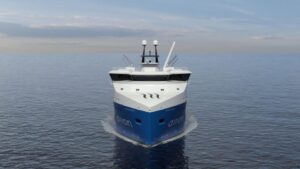The Covid pandemic seems to have stirred what a famous economist called “animal spirits” in the fast-spinning world of media. John Maynard Keynes was referring to the way in which people arrive at financial decisions.
And some significant investment moves have been made recently across many media sectors as players jockey for market share and the news provider landscape changes.
Perhaps buoyed by the enormous upsurge in online media use during the pandemic, a bunch of shiny start-up news outlets are emerging backed by optimistic investors.
There is a feeling that the news business desperately needs – and wants – more innovation.
Semafor is creating its own headlines in the US and plans to launch what it claims will be a new and ‘reliable’ news platform for a global audience in October.
In the tightly held media market of Singapore, a group of journalists have come together to launch Jom, aiming to offer news, insight and commentary on issues affecting ASEAN and the Lion City.
There are many other examples of new media launches around the world which is great news for journalists; it seems media has become ‘investable’ once again.
The folks at Jom and Semafor are convinced that news consumers will sign up for subscriptions to their apps and websites after receiving ‘free stuff’ for a year or so. It’s a hopeful business model.
In some ways the arcane world of shipping and maritime media mirrors developments in the mainstream global media. It has largely moved online in the past decade and for English language audiences (English remains the overwhelmingly dominant language of shipping), there is a range of choice for those keen on market movements, intel and gossip.
One such provider was Informa plc, the UK owners of the historic Lloyd’s List shipping daily, first published in 1734.
In a well-flagged move, Informa has just sold the List to European private equity firm Montagu which is paying £385m (US$466m) to buy Maritime Intelligence, better known as Lloyd’s List Intelligence, a data business which also includes Lloyd’s List.
Several commentators have pointed out that Montagu’s take-over rationale made much of the data and analytics side of the Maritime Intelligence unit. But little was mentioned about the editorial product Lloyd’s List, which is after all the group’s flagship title and brand name.
Like its rival, Tradewinds, Lloyd’s List largely relies on a subscription model for its revenues. It’s regarded as a ‘high value’ product and charges accordingly.
Its annual subscription is higher than the annual subscription to the Financial Times or the Wall Street Journal, for example.
Montagu clearly sees the value in combining Lloyd’s List and the Maritime Intelligence business into its wider data and analytics portfolio which includes Janes, the defence and aerospace data and information provider.
Lloyd’s List has made progress harnessing its powerful maritime databases and analytics to produce some well-sourced and researched data-driven breaking news stories in recent times.
But as a purely stand-alone editorial product, admittedly with a storied brand name, it remains to be seen how it can be fully assimilated into what is essentially a data and analytics operation.
They are very different businesses and in disposing of the List, Informa has perhaps recognised this.
While the established ‘big players’ in maritime publishing stick to their ‘high value’ subscriptions model, claiming to offer ‘must have’ news and information, it seems the rest of the maritime publishing market is heading in another direction.
Here the mantra is more aligned to the new mainstream start-ups which says: “give it them free for a while, get them hooked, then make them pay”.
And build a raft of other ‘paid for’ products, such as events and contract publishing, to support the mothership editorial product.
Most of the new entrants into the shipping and maritime publishing sector have adopted this approach.
With shipping in one of its strongest phases for many years and with a higher profile than ever, there is no doubt the need for factually based news reporting on the sector will remain and likely increase.
But it remains to be seen which business publishing model is the most likely to prevail in the long term – whether that’s in mainstream or maritime media.
Ed is a former Lloyd’s List correspondent









